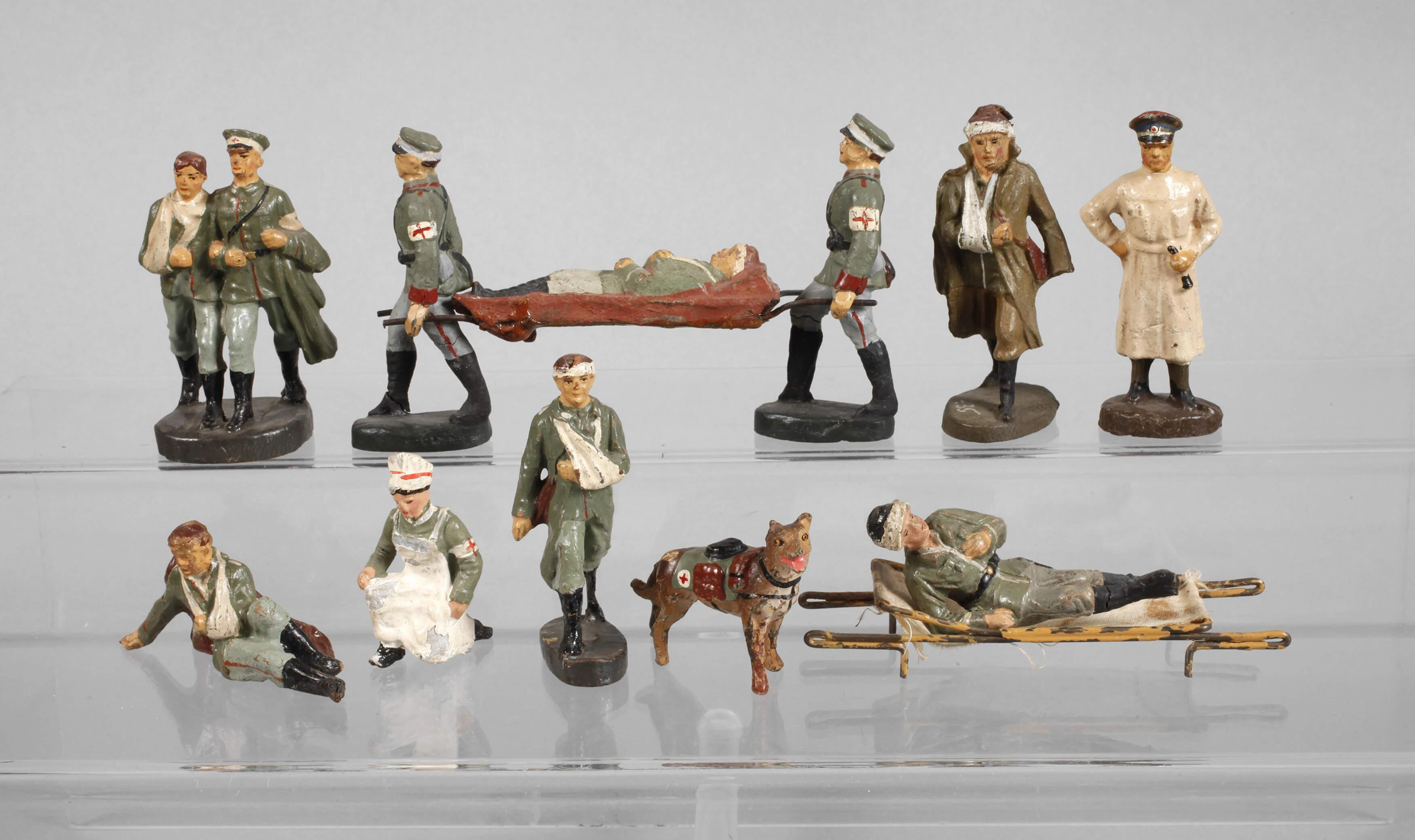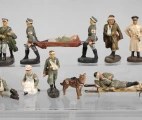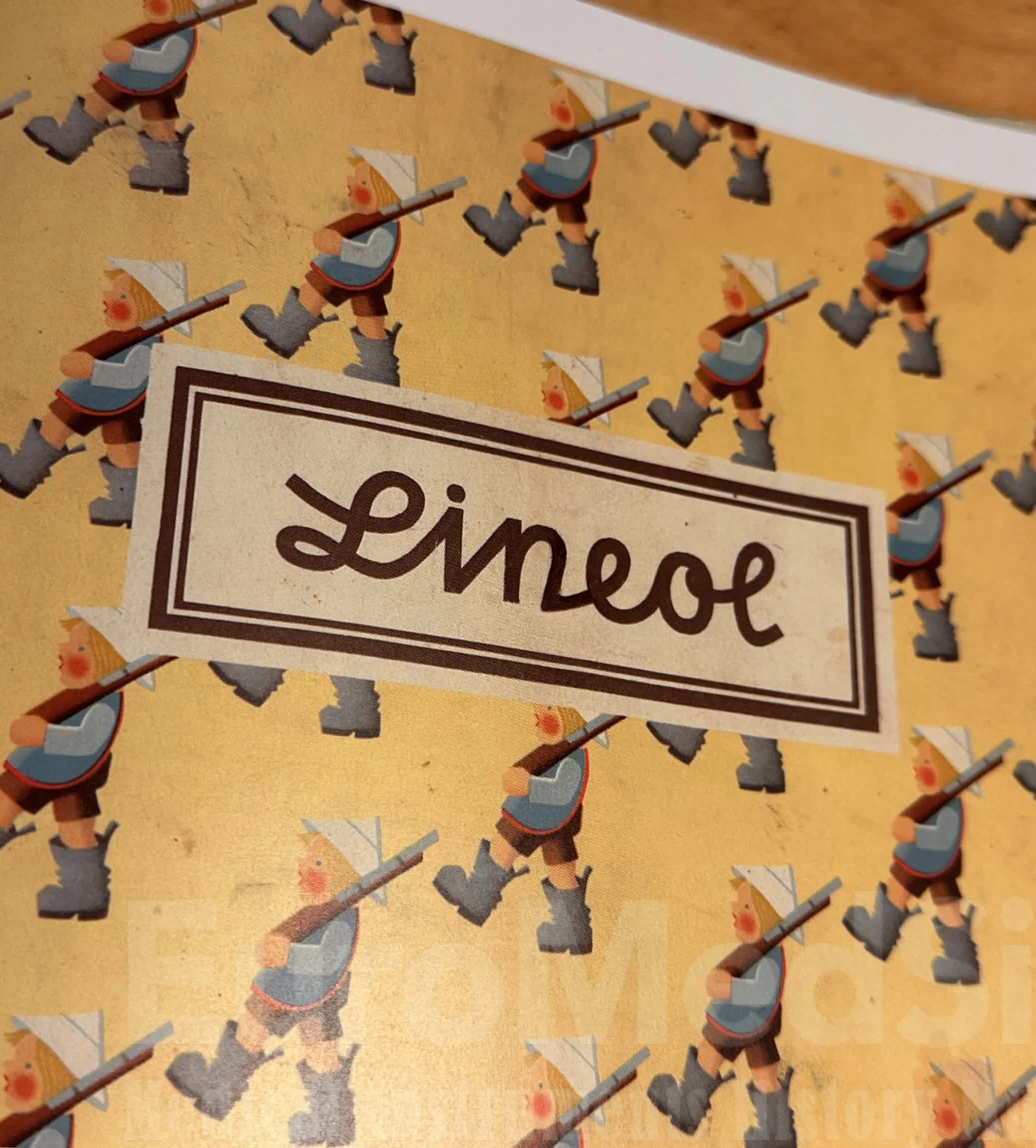Elastolin (O. & M. Hausser)
O. & M. Hausser, commonly known by their brand name Elastolin, was a German toy company renowned for its high-quality and intricately designed figurines – extensive range of hand-painted toy soldiers, historical personalities, and animals. It was founded in 1904 by Otto and Max Hausser in Ludwigsburg (Baden-Württemberg, Germany). In 1910, the company began producing parlor games and mass-produced figurines. These mostly depicted soldiers and other war toys and were made from Elastolin – a composition (Masse) of sawdust, casein, glue and kaolin with wire frames in tin moldes. This material was lightweight yet durable and allowed for detailed craftsmanship. In 1935 the company moved to Neustadt near Coburg in Bavaria. It's production were highly popular in Germany and across Europe in 1930-s, admired for their realistic detail and durability. After the Second World War, Elastolin introduced plastic figurines, which became a significant part of their product line. In the latter half of the 20th century, economic challenges and changing market conditions led to a decline in the company’s fortunes, and the company was finally closed down in 1983. Today, Elastolin figurines are considered valuable collectibles, with many enthusiasts and collectors all over the World seeking to preserve the craftsmanship and history of these unique toys.
Medical Uniform
The uniforms of the figurines of German army soldiers before and during WWII were painted in genuine colors (field grey - Feldgrau) with correct 'service colors' (Waffenfarbe) that referred to specific branches or unit types. Each branch had its designated color displayed on uniform elements such as collar tabs, shoulder boards, and piping on the uniforms' caps. White was for infantry, red for artillery, and bright blue was used by the medical corps.
Field medics responsible for first aid and transport to the Field Hospital (Feldlazarett) wore their standard uniforms, featuring a white band with a red cross on the left arm. This is why figures of combat medics have different service colours — most often white (infantry) or red (artillery).
Nursing Sisters wore a special type of nurse's cap, a white 'nursing veil' or 'nursing headscarf', especially as part of their uniforms during World War I (1914-1918) and World War II (1939-1945). A less traditional and more practical alternative was a white nurse cap that covered the hair and was tied at the nape, resembling a bonnet or a simple medical white head cap (Schwesternhaube). The white color of the cap symbolized cleanliness and hygiene. These caps were worn mainly within medical facilities or hospitals, and less so in the field. The uniform dress was cornflower blue or field-grey in color, paired with a white apron (Schürtze) with bands cross-tied at the back.
Military doctor in white gown (Ärztekittel), wearing glasses and peaked cap (Schirmmütze) with a red crown, black band featuring a red cross cockade, and a black visor.
The Elastolin figurines had an oval base, unlike their competitor Lineol, which had rectangular bases.
Reference literature
- Elastolin: Miniature figures and groups from the Hausser firm of Germany 1900 - 1950. Theriault's, ISBN: 9780912823140. Published by Gold Horse Publishing, 1990
- Polaine, Reggie and Jawkins, David. The Story of / die Geschicht von Hausser Elastolin (v. 1, War Toys). New Cavendish Books, 1979, p. 248. ISBN: 978-0904568172
- Polaine, Reggie. Spielzeugsoldaten. Nr. 1. Die Geschichte von HAUSSER-ELASTOLIN, p. 136. ASIN: B004Y0AI5Y


